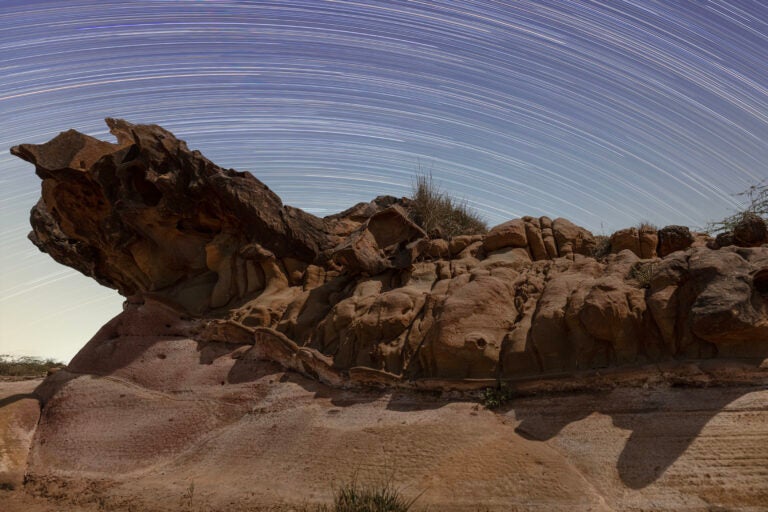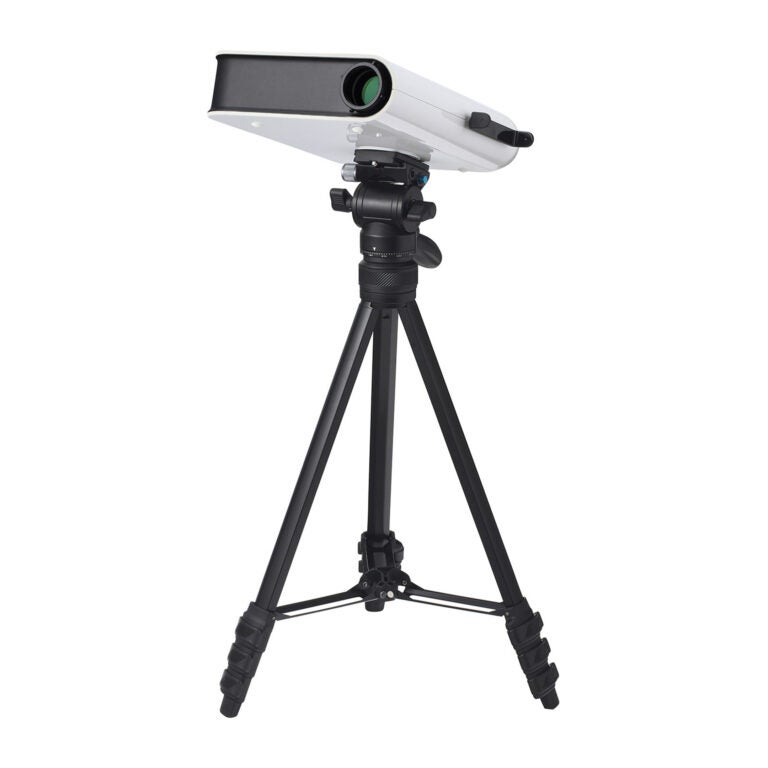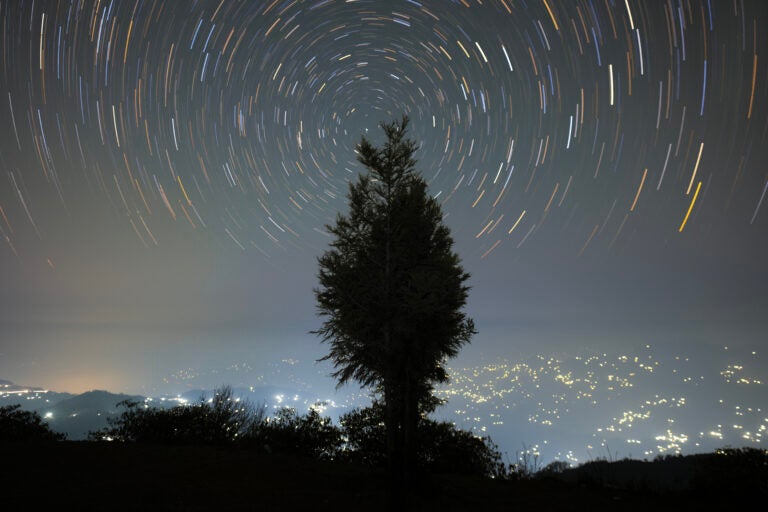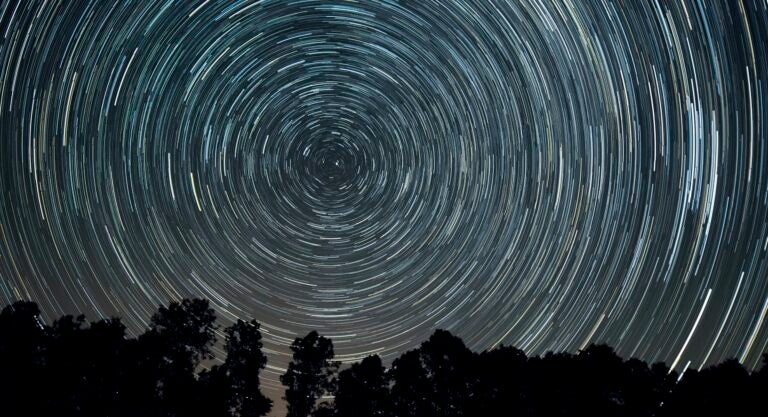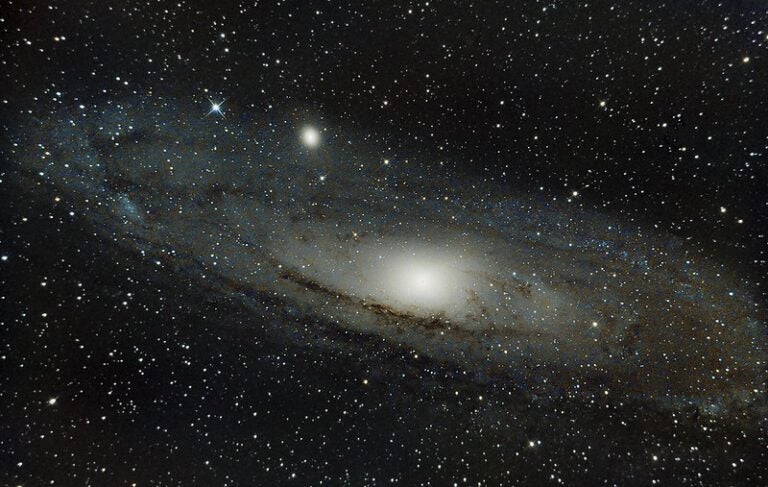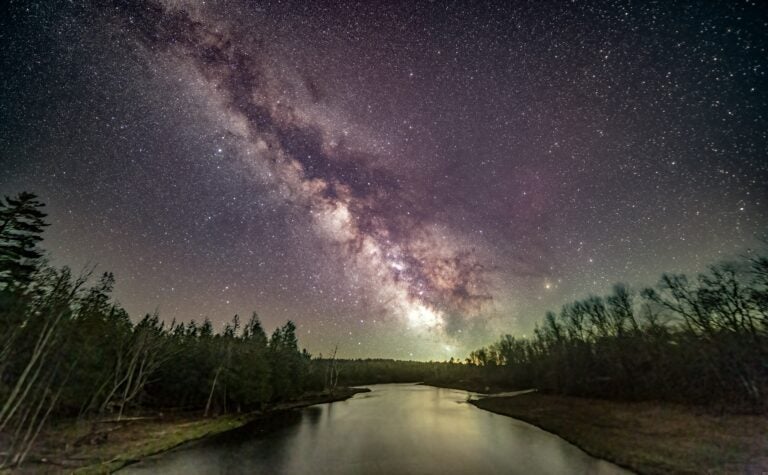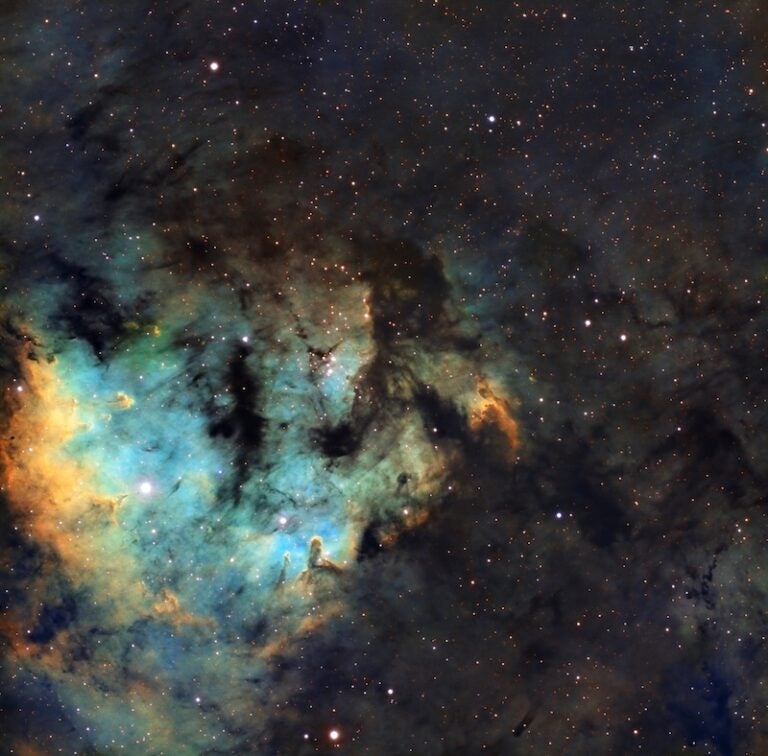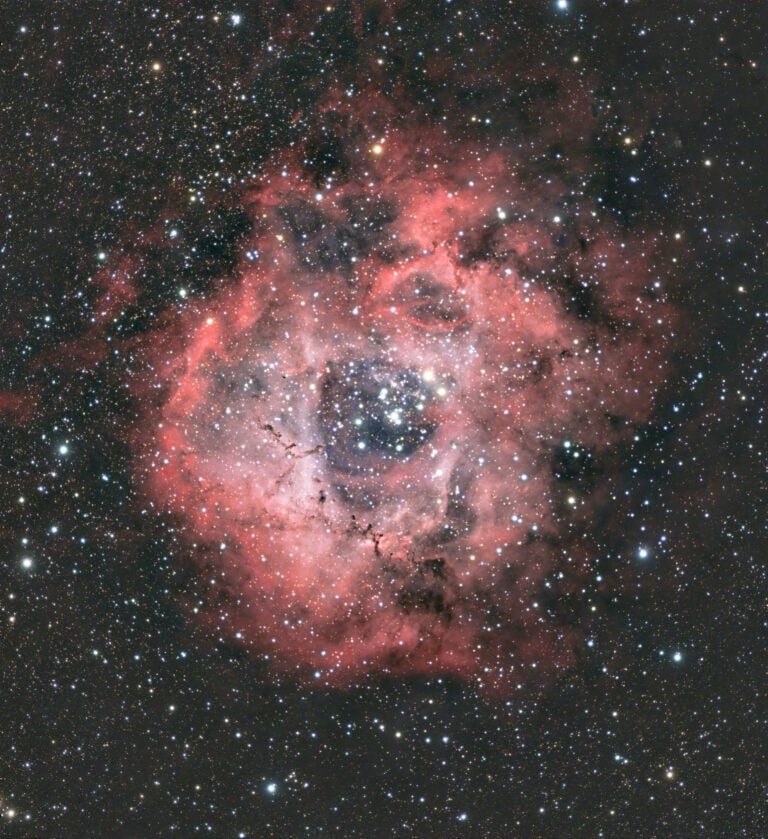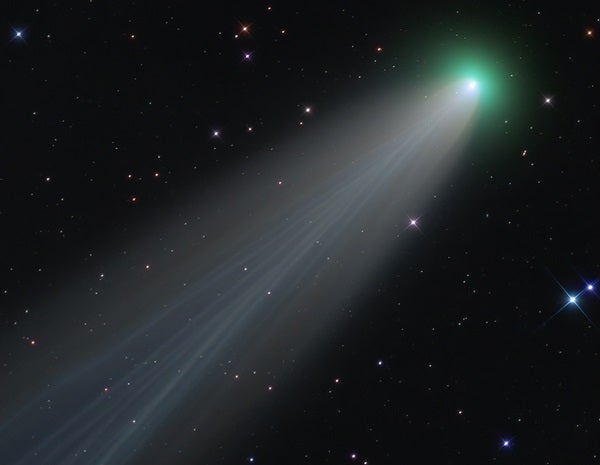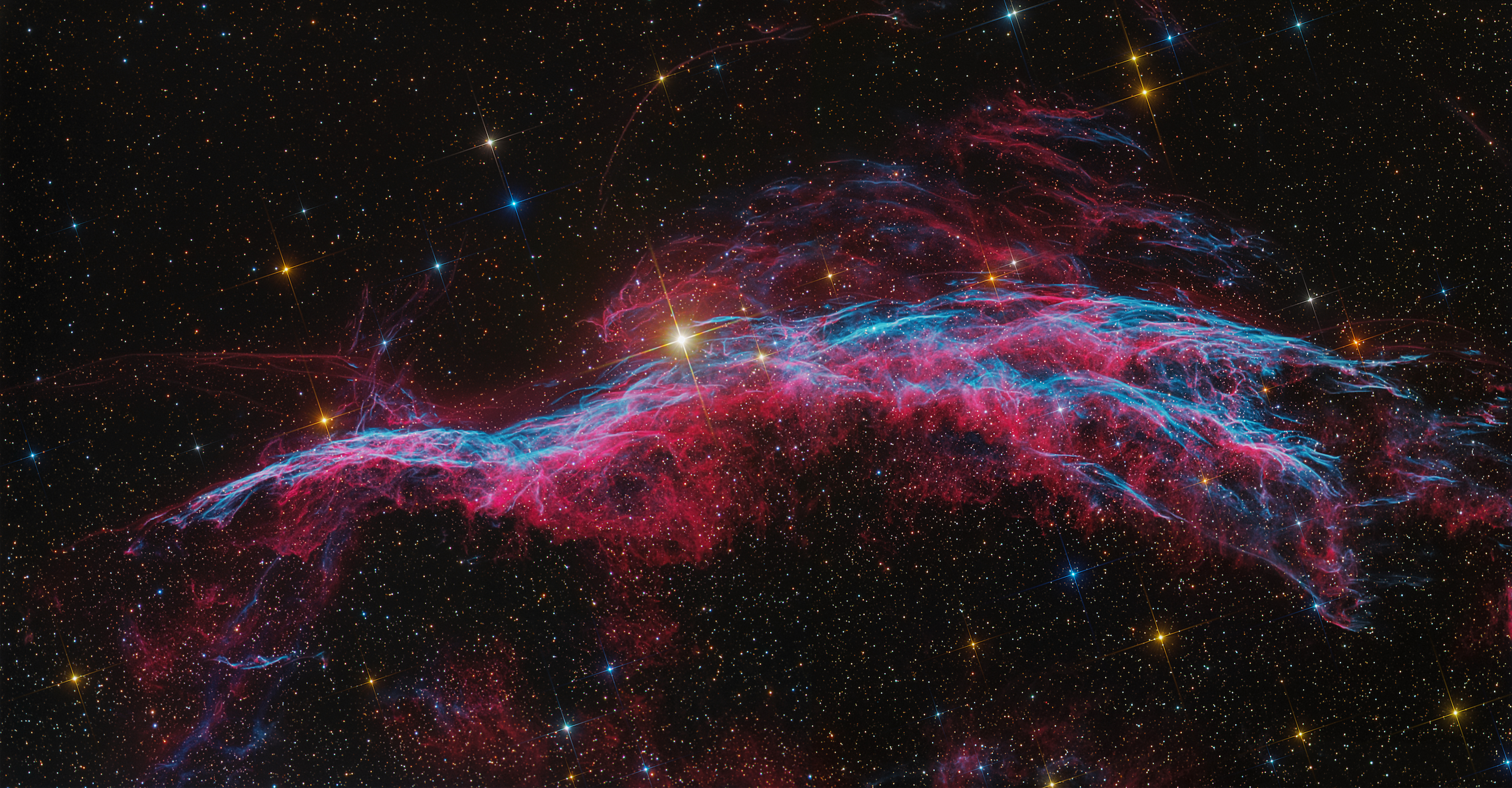
Coming full circle
One spring day last year, I received a package in the mail from a class of fourth-graders at a local elementary school. Each student had picked an object from my website (www.hansonastronomy.com) and had written a poem and drawn a picture about the object. My heart melted. These kids were looking at my pictures! How many of them were curious and had questions they wanted answered? Would one of them grow up to be an amateur astronomer, scientist, or astrophotographer? Would I play the “Doc” role to one of these curious kids in the future? What will their contributions reveal that they never imagined? I recalled my time in Ms. Z.’s space science class. Hopefully, this is my way of knowing that my Astronomy magazine loans have been forgiven.Science, too?
Amateur astronomers can definitely contribute to science. After all, you never know what will end up in your images.
In 2014, I was approached by David Martinez-Delgado, a Spanish astrophysicist working on the Stellar Tidal Stream Survey at the Max Planck Institute for Astronomy in Heidelberg, Germany. He saw something in my data that he hadn’t seen before and asked if I would share it with him. It was a newly discovered stellar stream in a nearby spiral galaxy, NGC 3628. Now I collaborate with him regularly by receiving specific targets to image so that data can be included in his group’s research papers.
I have really started to enjoy this aspect of imaging. Whenever I image a new stream target, I have a hard time sleeping until I get those first 10 frames back and can take a peek at them.
While I image from DSNM, I am also a part of Sierra Remote Observatories in San Jose, California, and Star Shadows Remote Observatory in Chile. You can never have too much data, and imaging new targets from the Southern Hemisphere has been fascinating.
I’ve embraced the constant change and growth in this field and try to keep current with videos, books, online information, and trial and error. My current programs of choice for processing are CCDStack, Photoshop, and, more recently, PixInsight. For many years, I’ve used CCDStack to do my image calibration. For research purposes, the images are complete at this point, but for me this is just the beginning. Adding my own creative take on the final product is what I love the most, and I can spend tens of hours working on one image to get it just right. My goal is to keep the images as real as possible, while adding my own artistic influence along the way.My fascination with space started in high school, when I “borrowed” the Astronomy magazines from my science classroom to look at the amazing pictures. (Sorry, Ms. Z., that you never saw those magazines again.) I remember having so many questions about how the pictures were taken. What type of telescope was used? How deep into space were those objects? How do you take such spectacular pictures of something so far away?
I wasn’t a horrible student, but I excelled only at the subjects that interested me — like space science. Looking back, I guess this makes a lot of sense, as I still dive into my passions fully, with little help from more formal academic settings.Going remote
Also around this time, Doc, MAS members Greg Sellek and Matt Mills, and I were setting up the Doc Greiner Research Observatory (DGRO) to run remotely. This was a pretty big deal in 2005. I collected data for processing, while Matt and Greg looked for asteroids. The DGRO has moved a few times over the years, finally settling in what is now Dark Sky New Mexico (DSNM) near Animas. Once we had our setup at DSNM running smoothly, I began helping others set up their observatories, and I have become knowledgeable about performing maintenance on a variety of scopes. Through doing this, I’ve met some remarkable people.One of these people is Stan Watson from Stellar Winds Observatory (SWO) at DSNM. We became friends while I was doing some maintenance at his facility. Now I’m also a part of the team there. These days, I do most of my imaging using SWO’s 24- and 17-inch scopes. Recently, three images I took with these scopes were short-listed in the Insight Astronomy Photographer of the Year contest in London.First steps
Fifteen years after high school, in the late 1990s, I toyed with the idea of taking my own pictures of space, albeit with limited funds. With what little I knew at the time, I started taking pictures of aurorae with a film camera. Then I took pictures of the Milky Way. Later, I graduated to my backyard setup: a homemade equatorial platform with my film camera duct-taped to the eyepiece of a Dobsonian telescope. It did the trick at the time. I still remember seeing the first image of the bands of color in Jupiter’s atmosphere. Next were the rings of Saturn. I was hooked.
Around that time, I learned about our local astronomy club, the Madison Astronomical Society (MAS). MAS had a dark-sky site — Yanna Research Station (YRS) — and permanent telescopes. There I met the late Richard A. Greiner (“Doc”), and my life changed. Doc was a retired engineering professor from the University of Wisconsin-Madison and already well known in the astronomy community. He saw my passion for learning and began to teach me the mechanics of telescopes, mounts, cameras, and roof controllers. There were many nights when I served as his telescope mechanic out at YRS while he gave me instructions over the phone.My passion became an obsession under Doc’s guidance. As a beginner, there was so much to learn. In 2003, I took my first trip to New Mexico Skies in Mayhill, New Mexico, where I met Mike and Lynn Rice. I was so excited about having the site’s 6-inch refractor all to myself, and Mike let me put my DSLR on it. While I was on the trip, Lynn showed me my own photograph of the Witch Head Nebula (IC 2118) in the August 2003 issue of Astronomy. I couldn’t believe it.

